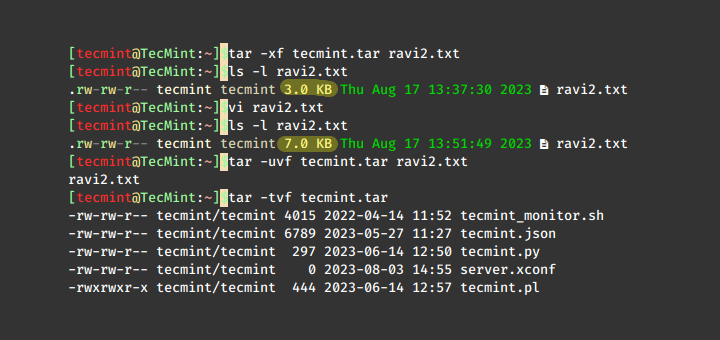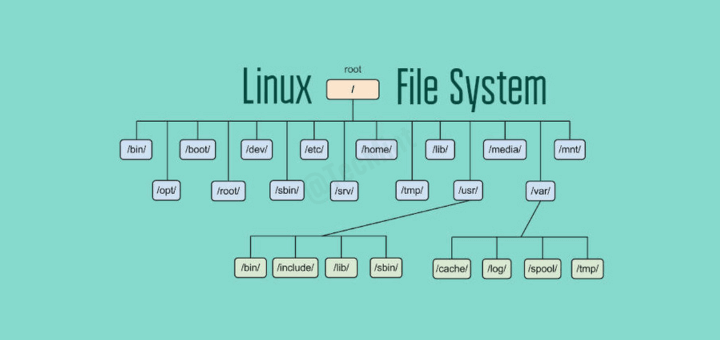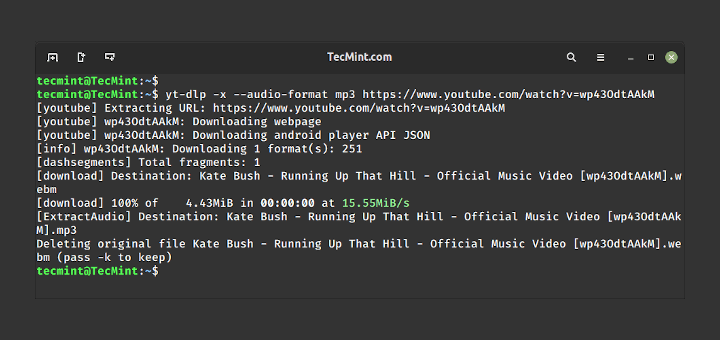The concept of creating or configuring multiple IP addresses on a single network interface is called IP aliasing. IP aliasing is very useful for setting up multiple virtual sites on Apache using one single network interface with different IP addresses on a single subnet network.
The main advantage of using this IP aliasing is, you don’t need to have a physical adapter attached to each IP, but instead you can create multiple or many virtual interfaces (aliases) to a single physical card.

The instructions given here are applies to all major Linux distributions like Red Hat, Fedora, and CentOS. Creating multiple interfaces and assign IP address to it manually is a daunting task. Here we’ll see how we can assign IP address to it defining a set of IP range. Also understand how we are going to create a virtual interface and assign different range of IP Address to an interface in one go. In this article we used LAN IP‘s, so replace those with ones you will be using.
Creating Virtual Interface and Assign Multiple IP Addresses
Here I have an interface called “ifcfg-eth0“, the default interface for the Ethernet device. If you’ve attached second Ethernet device, then there would be an “ifcfg-eth1” device and so on for each device you’ve attached. These device network files are located in “/etc/sysconfig/network-scripts/” directory. Navigate to the directory and do “ls -l” to list all devices.
# cd /etc/sysconfig/network-scripts/ # ls -l
Sample Output
ifcfg-eth0 ifdown-isdn ifup-aliases ifup-plusb init.ipv6-global ifcfg-lo ifdown-post ifup-bnep ifup-post net.hotplug ifdown ifdown-ppp ifup-eth ifup-ppp network-functions ifdown-bnep ifdown-routes ifup-ippp ifup-routes network-functions-ipv6 ifdown-eth ifdown-sit ifup-ipv6 ifup-sit ifdown-ippp ifdown-tunnel ifup-isdn ifup-tunnel ifdown-ipv6 ifup ifup-plip ifup-wireless
Let’s assume that we want to create three additional virtual interfaces to bind three IP addresses (172.16.16.126, 172.16.16.127, and 172.16.16.128) to the NIC. So, we need to create three additional alias files, while “ifcfg-eth0” keeps the same primary IP address. This is how we moving forward to setup three aliases to bind the following IP addresses.
Adapter IP Address Type ------------------------------------------------- eth0 172.16.16.125 Primary eth0:0 172.16.16.126 Alias 1 eth0:1 172.16.16.127 Alias 2 eth0:2 172.16.16.128 Alias 3
Where “:X” is the device (interface) number to create the aliases for interface eth0. For each alias you must assign a number sequentially. For example, we copying existing parameters of interface “ifcfg-eth0” in virtual interfaces called ifcfg-eth0:0, ifcfg-eth0:1 and ifcfg-eth0:2. Go into the network directory and create the files as shown below.
# cd /etc/sysconfig/network-scripts/ # cp ifcfg-eth0 ifcfg-eth0:0 # cp ifcfg-eth0 ifcfg-eth0:1 # cp ifcfg-eth0 ifcfg-eth0:2
Open a file “ifcfg-eth0” and view the contents.
[root@tecmint network-scripts]# vi ifcfg-eth0 DEVICE="eth0" BOOTPROTO=static ONBOOT=yes TYPE="Ethernet" IPADDR=172.16.16.125 NETMASK=255.255.255.224 GATEWAY=172.16.16.100 HWADDR=00:0C:29:28:FD:4C
Here we only need two parameters (DEVICE and IPADDR). So, open each file with VI editor and rename the DEVICE name to its corresponding alias and change the IPADDR address. For example, open files “ifcfg-eth0:0“, “ifcfg-eth0:1” and “ifcfg-eth0:2” using VI editor and change both the parameters. Finally it will look similar to below.
ifcfg-eth0:0
DEVICE="eth0:0" BOOTPROTO=static ONBOOT=yes TYPE="Ethernet" IPADDR=172.16.16.126 NETMASK=255.255.255.224 GATEWAY=172.16.16.100 HWADDR=00:0C:29:28:FD:4C
ifcfg-eth0:1
DEVICE="eth0:1" BOOTPROTO=static ONBOOT=yes TYPE="Ethernet" IPADDR=172.16.16.127 NETMASK=255.255.255.224 GATEWAY=172.16.16.100 HWADDR=00:0C:29:28:FD:4C
ifcfg-eth0:2
DEVICE="eth0:2" BOOTPROTO=static ONBOOT=yes TYPE="Ethernet" IPADDR=172.16.16.128 NETMASK=255.255.255.224 GATEWAY=172.16.16.100 HWADDR=00:0C:29:28:FD:4C
Once, you’ve made all changes, save all your changes and restart/start the network service for the changes to reflect.
[root@tecmint network-scripts]# /etc/init.d/network restart
To verify all the aliases (virtual interface) are up and running, you can use “ifconfig” or “ip” command.
[root@tecmint network-scripts]# ifconfig
eth0 Link encap:Ethernet HWaddr 00:0C:29:28:FD:4C
inet addr:172.16.16.125 Bcast:172.16.16.100 Mask:255.255.255.224
inet6 addr: fe80::20c:29ff:fe28:fd4c/64 Scope:Link
UP BROADCAST RUNNING MULTICAST MTU:1500 Metric:1
RX packets:237 errors:0 dropped:0 overruns:0 frame:0
TX packets:198 errors:0 dropped:0 overruns:0 carrier:0
collisions:0 txqueuelen:1000
RX bytes:25429 (24.8 KiB) TX bytes:26910 (26.2 KiB)
Interrupt:18 Base address:0x2000
eth0:0 Link encap:Ethernet HWaddr 00:0C:29:28:FD:4C
inet addr:172.16.16.126 Bcast:172.16.16.100 Mask:255.255.255.224
UP BROADCAST RUNNING MULTICAST MTU:1500 Metric:1
Interrupt:18 Base address:0x2000
eth0:1 Link encap:Ethernet HWaddr 00:0C:29:28:FD:4C
inet addr:172.16.16.127 Bcast:172.16.16.100 Mask:255.255.255.224
UP BROADCAST RUNNING MULTICAST MTU:1500 Metric:1
Interrupt:18 Base address:0x2000
eth0:2 Link encap:Ethernet HWaddr 00:0C:29:28:FD:4C
inet addr:172.16.16.128 Bcast:172.16.16.100 Mask:255.255.255.224
UP BROADCAST RUNNING MULTICAST MTU:1500 Metric:1
Interrupt:18 Base address:0x2000
Ping each of them from different machine. If everything setup correctly, you will get a ping response from each of them.
ping 172.16.16.126 ping 172.16.16.127 ping 172.16.16.128
Sample Output
[root@tecmint ~]# ping 172.16.16.126 PING 172.16.16.126 (172.16.16.126) 56(84) bytes of data. 64 bytes from 172.16.16.126: icmp_seq=1 ttl=64 time=1.33 ms 64 bytes from 172.16.16.126: icmp_seq=2 ttl=64 time=0.165 ms 64 bytes from 172.16.16.126: icmp_seq=3 ttl=64 time=0.159 ms --- 172.16.16.126 ping statistics --- 3 packets transmitted, 3 received, 0% packet loss, time 2002ms rtt min/avg/max/mdev = 0.159/0.552/1.332/0.551 ms [root@tecmint ~]# ping 172.16.16.127 PING 172.16.16.127 (172.16.16.127) 56(84) bytes of data. 64 bytes from 172.16.16.127: icmp_seq=1 ttl=64 time=1.33 ms 64 bytes from 172.16.16.127: icmp_seq=2 ttl=64 time=0.165 ms 64 bytes from 172.16.16.127: icmp_seq=3 ttl=64 time=0.159 ms --- 172.16.16.127 ping statistics --- 3 packets transmitted, 3 received, 0% packet loss, time 2002ms rtt min/avg/max/mdev = 0.159/0.552/1.332/0.551 ms [root@tecmint ~]# ping 172.16.16.128 PING 172.16.16.128 (172.16.16.128) 56(84) bytes of data. 64 bytes from 172.16.16.128: icmp_seq=1 ttl=64 time=1.33 ms 64 bytes from 172.16.16.128: icmp_seq=2 ttl=64 time=0.165 ms 64 bytes from 172.16.16.128: icmp_seq=3 ttl=64 time=0.159 ms --- 172.16.16.128 ping statistics --- 3 packets transmitted, 3 received, 0% packet loss, time 2002ms rtt min/avg/max/mdev = 0.159/0.552/1.332/0.551 ms
Seems everything working smoothly, With these new IPs’ you can setup virtual sites in Apache, FTP accounts and many other things.
Assign Multiple IP Address Range
If you would like to create a range of Multiple IP Addresses to a particular interface called “ifcfg-eth0“, we use “ifcfg-eth0-range0” and copy the contains of ifcfg-eth0 on it as shown below.
[root@tecmint network-scripts]# cd /etc/sysconfig/network-scripts/ [root@tecmint network-scripts]# cp -p ifcfg-eth0 ifcfg-eth0-range0
Now open “ifcfg-eth0-range0” file and add “IPADDR_START” and “IPADDR_END” IP address range as shown below.
[root@tecmint network-scripts]# vi ifcfg-eth0-range0 #DEVICE="eth0" #BOOTPROTO=none #NM_CONTROLLED="yes" #ONBOOT=yes TYPE="Ethernet" IPADDR_START=172.16.16.126 IPADDR_END=172.16.16.130 IPV6INIT=no #GATEWAY=172.16.16.100
Save it and restart/start network service
[root@tecmint network-scripts]# /etc/init.d/network restart
Verify that virtual interfaces are created with IP Address.
[root@tecmint network-scripts]# ifconfig
eth0 Link encap:Ethernet HWaddr 00:0C:29:28:FD:4C
inet addr:172.16.16.125 Bcast:172.16.16.100 Mask:255.255.255.224
inet6 addr: fe80::20c:29ff:fe28:fd4c/64 Scope:Link
UP BROADCAST RUNNING MULTICAST MTU:1500 Metric:1
RX packets:1385 errors:0 dropped:0 overruns:0 frame:0
TX packets:1249 errors:0 dropped:0 overruns:0 carrier:0
collisions:0 txqueuelen:1000
RX bytes:127317 (124.3 KiB) TX bytes:200787 (196.0 KiB)
Interrupt:18 Base address:0x2000
eth0:0 Link encap:Ethernet HWaddr 00:0C:29:28:FD:4C
inet addr:172.16.16.126 Bcast:172.16.16.100 Mask:255.255.255.224
UP BROADCAST RUNNING MULTICAST MTU:1500 Metric:1
Interrupt:18 Base address:0x2000
eth0:1 Link encap:Ethernet HWaddr 00:0C:29:28:FD:4C
inet addr:172.16.16.127 Bcast:172.16.16.100 Mask:255.255.255.224
UP BROADCAST RUNNING MULTICAST MTU:1500 Metric:1
Interrupt:18 Base address:0x2000
eth0:2 Link encap:Ethernet HWaddr 00:0C:29:28:FD:4C
inet addr:172.16.16.128 Bcast:172.16.16.100 Mask:255.255.255.224
UP BROADCAST RUNNING MULTICAST MTU:1500 Metric:1
Interrupt:18 Base address:0x2000
eth0:3 Link encap:Ethernet HWaddr 00:0C:29:28:FD:4C
inet addr:172.16.16.129 Bcast:172.16.16.100 Mask:255.255.255.224
UP BROADCAST RUNNING MULTICAST MTU:1500 Metric:1
Interrupt:18 Base address:0x2000
eth0:4 Link encap:Ethernet HWaddr 00:0C:29:28:FD:4C
inet addr:172.16.16.130 Bcast:172.16.16.100 Mask:255.255.255.224
UP BROADCAST RUNNING MULTICAST MTU:1500 Metric:1
Interrupt:18 Base address:0x2000
If you having any trouble in setting up, please do post your queries in the comment section.







Hey, I have some questions, can I connect PPPoE (pp0) and ethernet (eth0) at the same time?
if it can, how to do it?
thanks
So if the server/system is initiating traffic, which IP will be used as the source. Can we define which source IP needs to be used when the server is initiating any traffic?
ifcfg-eth0:2
After changing them how can I save? I mean which key should I use.
I tried it in virtual box multiples interface not reflecting in ifconfig however it’s showing as network available but at a time only one interface is working and tried to ping other interfaces like eth0:2,3,4 from eth0 its showing Destination host unreachable
It is not working on RHEL 7
Does that also work for IPs in different subnets?
I like the alias table display. How did you format it into Adapter, IP Address, Type columns?
given a text file like (lots of white space)